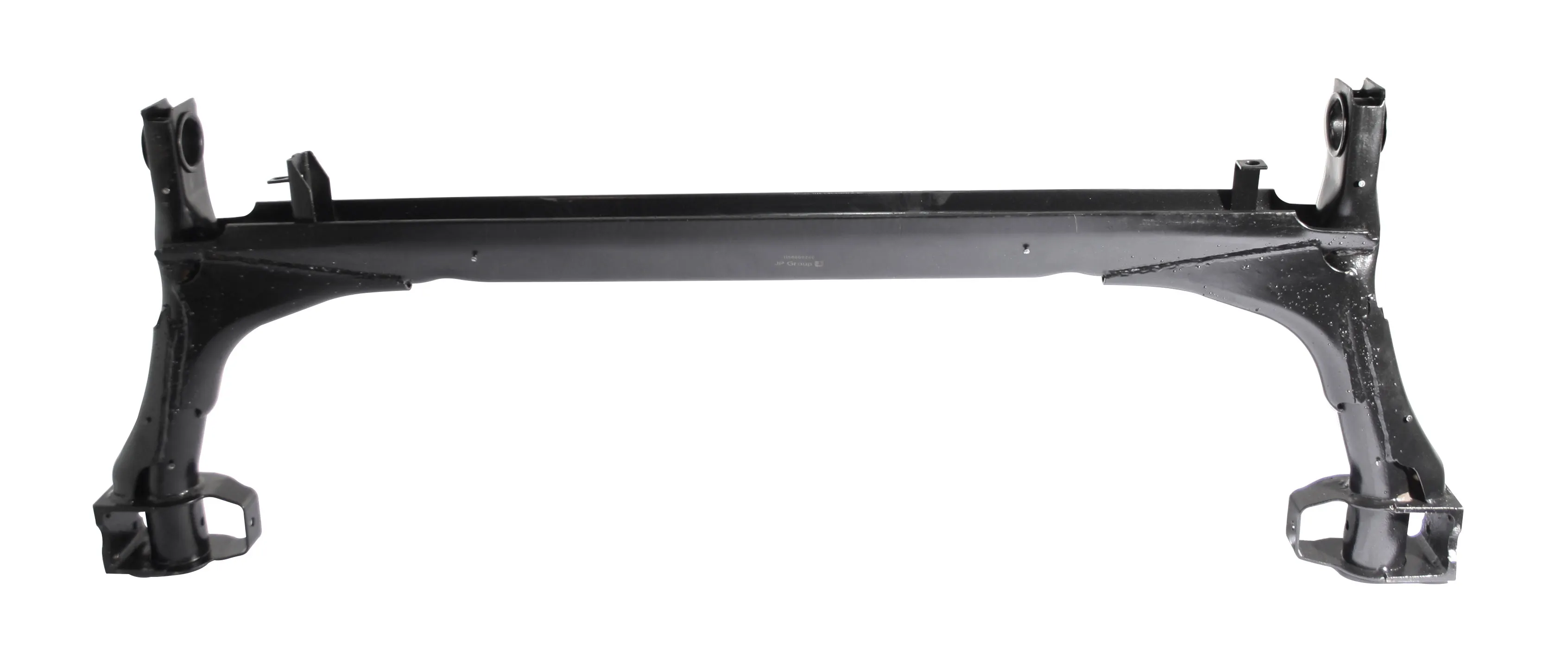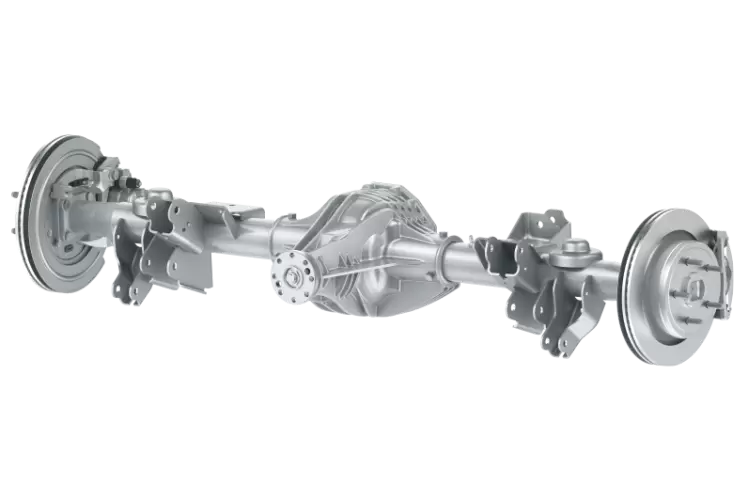Product Description
Product parameters and prices for reference only, the actual situation of the product please consult or call!
| Tubing: | 2 3/8″ OD (Standard), Galvanized Option (Marine),Corrosion Resistant Hubs |
| • V-Bend Beam Option | |
| Bolt Pattern Options: | • 5 on 4 1/2″, 4 3/4″, 5″, and 5 1/2″ |
| • 6 on 5 1/2″ | |
| Brake Options: | Some available with parking feature. |
| • 10″ x 2 1/4″ Electric (Manual or Nev-R-Adjust ) | |
| • 10″ x 2 1/4″ Hydraulic (Uni-Servo, Duo-Servo or | |
| Freebacking) | |
| • 10″ X 2 1/4″ Hydraulic Freebacking Corrosion | |
| Resistant (Galv/Marine Axle) | |
| • Hydraulic Disc: 5 on 4 1/2″ only | |
| Spindles: | Uses L68149 Inner Bearing, L44649 Outer Bearing. |
| • Straight • Drop: 4″ or 6″ | |
| • Stainless Steel Wear Sleeves on Galvanized Axles |
1. All the electric trailer brakes and drums are painted surface.
2. The electric brakes in American market and Australia market are a little different. We supply bother American style and
Australian style braked axles.
3. 3500 lbs trailer axles kits with brakes are also available here.
Contact us to get quotation now.
/* March 10, 2571 17:59:20 */!function(){function s(e,r){var a,o={};try{e&&e.split(“,”).forEach(function(e,t){e&&(a=e.match(/(.*?):(.*)$/))&&1
| After-sales Service: | 1 Year |
|---|---|
| Condition: | New |
| Axle Number: | 2 |
| Application: | Trailer |
| Certification: | ISO |
| Material: | Steel |
| Samples: |
US$ 180/Piece
1 Piece(Min.Order) | |
|---|
| Customization: |
Available
| Customized Request |
|---|

Are there potential challenges or limitations to using beam axles in vehicles?
Using beam axles in vehicles has both advantages and disadvantages. It’s important to consider the challenges and limitations associated with beam axles:
1. Ride Quality:
Beam axles are generally stiffer than independent suspension systems. This stiffness can lead to a less comfortable ride on smooth or well-paved roads, as they transmit more road imperfections and vibrations to the passengers. Passengers may perceive this as a limitation in terms of ride comfort.
2. Limited Articulation:
Beam axles have limited articulation. When one wheel encounters a bump or obstacle, the other wheel is affected as well. This can result in a bumpier ride compared to independent suspension systems, where each wheel can move independently to absorb shocks. Off-road vehicles may experience challenges in maintaining traction on rough terrains due to this limitation.
3. Reduced Traction in Some Scenarios:
Beam axles can experience reduced traction in certain scenarios, such as when one wheel loses contact with the ground. In off-road situations, this can limit the vehicle’s ability to traverse uneven terrain, especially when compared to independent suspension systems that allow each wheel to react independently to ground conditions.
4. Challenging Maneuverability:
Maneuverability can be a limitation in vehicles with beam axles. The stiffness and design of beam axles can make it harder to navigate tight spaces or execute sharp turns. This can be a drawback, especially in urban environments or when parking in confined areas.
5. Weight Distribution:
Proper weight distribution is crucial for vehicle stability. Beam axles, while offering even weight distribution between wheels on the same axle, may not provide the same level of precision in weight distribution as independent suspension systems. This can affect handling and stability in some situations.
6. Limited Ride Comfort on Smooth Roads:
On smooth and well-paved roads, solid beam axles may lead to reduced ride comfort due to their stiffness. Passengers may experience a more jarring ride, and the vehicle may struggle to absorb minor road imperfections.
7. Noise and Vibration:
Beam axles can transmit more noise and vibration from the road to the vehicle’s occupants. This can result in a less refined and quieter cabin environment compared to vehicles with independent suspension systems.
8. Suspension Tuning Challenges:
Designing the suspension components and tuning the shock absorbers for vehicles with beam axles can be challenging. Manufacturers must strike a balance between load-carrying capacity and ride comfort. Achieving an ideal balance can be difficult and may require compromises.
9. Vehicle-Specific Considerations:
The limitations of beam axles can vary depending on the vehicle’s intended use and design. While some limitations may be acceptable in off-road or heavy-duty applications, they may not be suitable for passenger cars or vehicles designed for urban commuting.
Summary:
Beam axles offer advantages in terms of durability and load distribution, but they also come with limitations related to ride comfort, maneuverability, and traction in certain scenarios. Vehicle manufacturers must carefully consider these limitations and weigh them against the specific needs and intended use of the vehicle.

How does a live axle differ from a dead axle in the context of beam axles?
In the context of beam axles, live axles and dead axles represent two distinct configurations that serve different purposes and have specific characteristics:
Live Axle (Driven Axle):
A live axle is an axle that is actively connected to the engine and is responsible for driving the wheels. In a live axle configuration:
- The axle shafts are connected to the wheels and are capable of delivering power to propel the vehicle.
- The wheels on a live axle are actively powered and provide propulsion, typically in rear-wheel-drive or four-wheel-drive (4WD) vehicles.
- Live axles are common in trucks, off-road vehicles, and 4×4 vehicles, where the ability to provide power to multiple wheels is crucial for traction in challenging terrain.
- Live axles are sometimes referred to as “driven axles” because they actively drive the vehicle.
Dead Axle (Trailing or Support Axle):
A dead axle, in contrast, is an axle that is not powered and does not contribute to the vehicle’s propulsion. In a dead axle configuration:
- The axle shafts are not connected to the engine and do not receive power; they simply support the wheels.
- Dead axles are often used in the front of front-wheel-drive vehicles, where the engine provides power to the front wheels, and the rear wheels are supported by dead axles.
- These axles are also used in trailers and semi-trailers, where they support the weight of the trailer but do not provide power to the wheels.
- Dead axles are sometimes referred to as “trailing axles” or “support axles” because they do not actively drive the vehicle.
Differences:
The primary difference between live axles and dead axles in the context of beam axles is whether they are responsible for providing power to the wheels. Live axles actively drive the vehicle, while dead axles are passive and serve a support or trailing role. The choice between these configurations depends on the specific vehicle design and its intended use, with live axles favored for off-road and high-traction applications and dead axles used for support and weight distribution.

Are beam axles still used in modern vehicles, and if so, in which ones?
Beam axles are still used in some modern vehicles, primarily in specific applications and vehicle types where their design benefits are advantageous. Here are instances in which beam axles are still employed in modern vehicles:
- 1. Heavy-Duty Trucks: Beam axles are commonly found in heavy-duty trucks and commercial vehicles. Their robust construction and load-bearing capacity make them suitable for applications where durability and weight-carrying capabilities are crucial.
- 2. Off-Road and 4×4 Vehicles: Off-road and 4×4 vehicles often use beam axles, especially for the rear axle. Beam axles provide excellent articulation and durability in rugged terrain, which is essential for off-road performance.
- 3. Utility and Work Vehicles: Some utility and work vehicles, such as delivery vans, box trucks, and industrial vehicles, use beam axles due to their ability to handle heavy loads and withstand frequent stops and starts.
- 4. Classic and Retro Vehicles: In the world of classic and retro cars, beam axles are retained for authenticity and historical accuracy in vehicle restoration or design. Some manufacturers offer modern vehicles with retro styling that includes beam axles for a classic look.
- 5. Specific Recreational Vehicles: Certain recreational vehicles, like RVs and camper trailers, may use beam axles for their durability and load-carrying capacity. These vehicles often require the ability to support the weight of living quarters or cargo.
It’s important to note that while beam axles are still used in these applications, they are less common in modern passenger cars and light-duty vehicles. Independent suspension systems have become the norm in these vehicles due to their benefits in terms of ride comfort, handling, and adaptability to diverse road conditions. The choice of suspension system depends on the intended use and design requirements of the vehicle.


editor by CX 2023-12-28